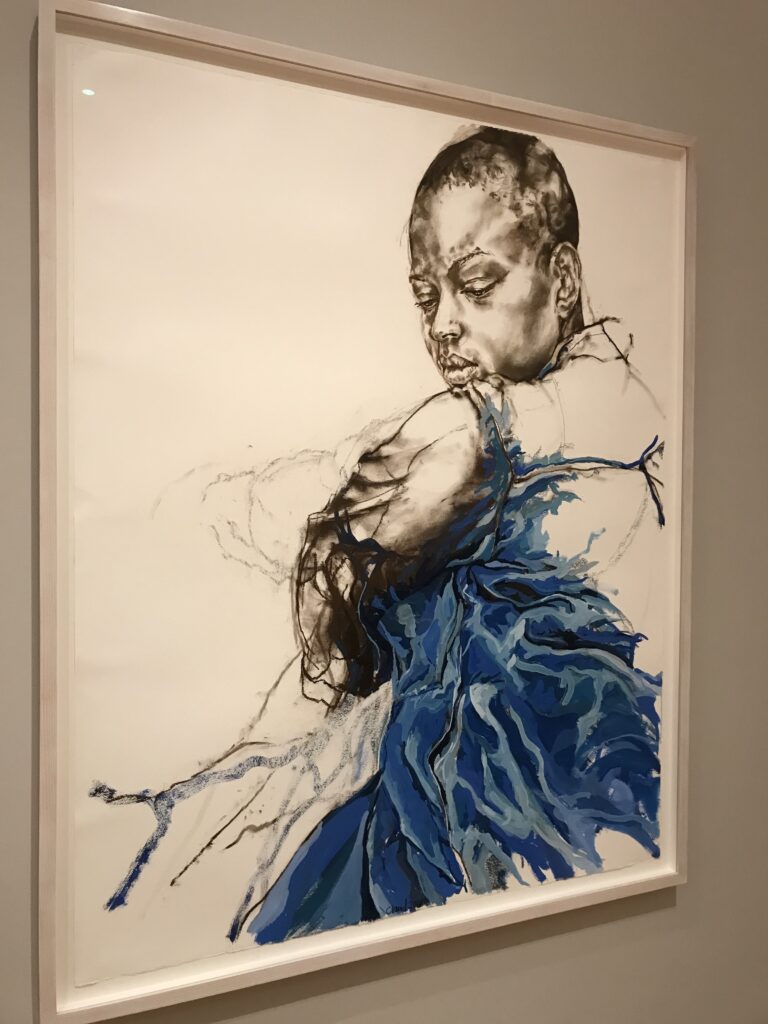By Estelle Simpson
The Turner prize makes more progress towards gender parity as three out of four of its 2024 nominees are women artists. The artists may be a sign of progress in diversity, however they all present talented, rich practices in their own right.
Whilst it took over a decade for a woman artist to win the Turner prize since its inaugural award in 1984, this year tempts another female victor – Claudette Johnson, Delaine le Bas, and Jasleen Kaur make up three quarters of the nominees. In its history, there have been ebbs and flows in equal gender representation for the prize; after Gillian Wearing’s achievement in 1997, the winners for the next eight years were all male. Previously criticised for a lack of shortlisted female-identifying artists, the Turner Prize is arguably building on the effort it has made in making the art world a fairer place.

Considering the sophistication and beauty of ‘Presence’ at the Courtauld earlier in the year, it is no surprise that Claudette Johnson has entered the mix, finally receiving the acclaim at 65 her practice deserves. In the former exhibition, large-scale works on paper held equal power with the traditional paintings of the Courtauld’s historic collection. In the Tate, the nominee’s room is once again filled with her characteristic dramatic poses, gazes, and scales, combined with a multimedia approach. From her own perspective, this portrays an intimate lens on the presence her friends, relatives, and self have within the country. Yet it is ‘Pieta’ which demonstrates the greatest heights of vulnerability and empathy that Claudette invest’s her figures with. A painted burial cloth is invested with the words of an Instagram caption ‘Every mother was called when he called for his mother’ the artist read at the time of the death of George Floyd, and the piece frames a striking image of a woman holding a male’s body. This beautiful body of work by Claudette also has a strong political stance, making comment on unaddressed racist violence that remains perpetuated by the state and police. Beyond her practice, she is a figurehead of the Black British Arts Movement founded in 1982.

Visionary cross-practice artist Delaine le Bas has produced a performative environment. She utilizes the mode of installation to provide many points of access for viewers to engage with her messages, allowing the “personal to be universal,” by creating environments that you can be fully immersed in. Always informed by a rich Roma heritage, ‘Incipit Vita Nova’ comments on death, loss, and renewal, and reflects on the passing of her grandmother. Demanding wonder and awe, the piece is a cocktail of playful and brutal gestures which perform a three part happening, integrating floating cutouts, floating veils, soundscapes, and projected videos. While the artist is not present, there is a punkish liveliness sensed in the route of red footsteps and splatter of paint drips on the calico floor that remain of her installation process. The immediacy of the piece is a powerful expression of making art in a time of chaos.


Jasleen Kaur’s room aims to reflect her upbringing in Glasgow’s Sikh community. On entering the room you are to be captivated by the large floral carpet below and the suspended ceiling above, finding yourself sandwiched between stimulating items of the artist’s youth. The shallow ceiling demands your head to be tilted upward throughout the walkway, scattered with curiosites. With a lowered ‘sky’ ceiling decorated with odes to the visual lexicon of her youth, a red vintage Ford escort adorned in an enlarged, hand crocheted doily, and the atmospheric layered symphony of kinetic hand bells and chants, her installation culminates in an invitingly immersive tunnel. The experience intimates her relative’s migrant desires. There are photos laid on the floor, a duo aside each other exploring unity and division, approaching the difficult complexities in our culture. The room is void of a presumed standardised eye level, demanding each viewer to be caged by its above/ below curation. This liminal space invites both a meditation on generosity and liberation, as well as violence and tension; overall it presents articulate, honest truths of the experience of Britain today. Jasleen Kaur’s imaginative response to a world increasingly marked by nationalism, division, and social control, provides a hopeful lens on these issues.

On top of this year’s potential increase in its gender parity, the artist’s on show use their identities and cultural upbringings to inform the intent and merit of their rooms. This bestows the diversity of contemporary art and the complexity of the world we live in. With the victor of this year’s quartet to be announced on December 3rd, there is a strong chance that the prize may increase its percentage of women artist winners this year.
It is arguable that on reflection of the current state of affairs we see our world in, it seems appropriate that this year’s Turner Prize is less about creating spectacle. All four of the artist rooms are focused and reflective, including that of Pio Abad. Each presents space for thoughtful meditations and the artist’s are aligned by notes of grief in their presentations. Less of the baffling and whimsical, there is a demanding sense of a call to action and encouragement of a change of perspective with the diversity of representation in 2024’s prize.
The Turner Prize runs at the Tate Britain until 16 February 2025. Winner to be announced 3 December.

Leave a Reply